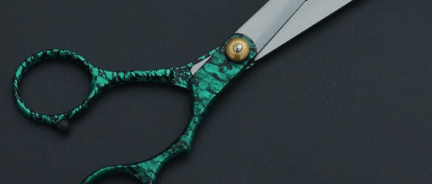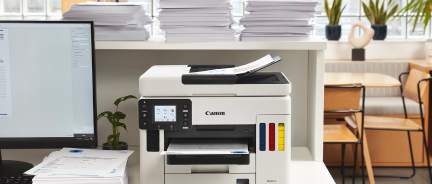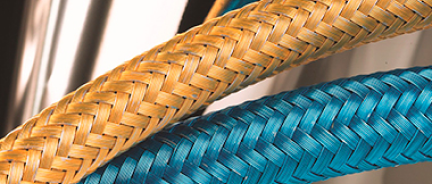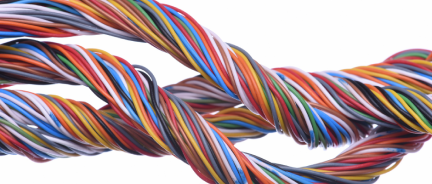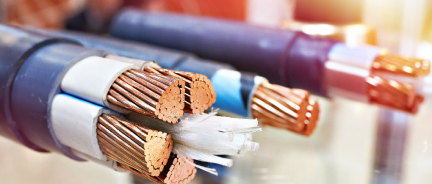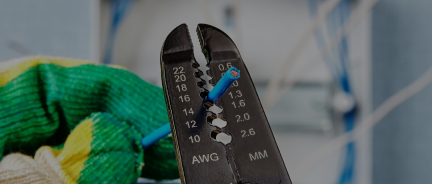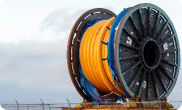Explicación del artículo 240 del NEC sobre dispositivos de protección contra sobrecorriente
El Artículo 240 del NEC describe los requisitos para la selección e instalación de dispositivos de protección contra sobrecorriente (OCPD), como fusibles e interruptores automáticos. El artículo define las especificaciones, la ubicación, las aplicaciones y los casos especiales adecuados para los OCPD en diversas aplicaciones.
¿Qué es una sobrecorriente?
Una sobrecorriente ocurre cuando la corriente excede el límite de seguridad de un conductor o equipo. Esto puede ocurrir debido a:
-
Sobrecarga: Demasiada corriente durante el funcionamiento normal (por ejemplo, al hacer funcionar varios electrodomésticos de alto voltaje en un circuito).
-
Cortocircuito: Contacto directo entre dos cables calientes o un cable caliente y neutro.
-
Falla a tierra: un cable caliente entra en contacto con una superficie conectada a tierra, como una caja de metal o un piso mojado.
Cómo los OCPD protegen los circuitos frente a los equipos
Los OCPD protegen los circuitos abriéndose cuando la corriente alcanza un valor que podría sobrecalentar los conductores. Esta protección funciona de forma diferente para los equipos. En estos últimos , los OCPD detienen cortocircuitos o fallas a tierra antes de que se produzcan daños significativos.
En resumen, la protección del circuito evita el sobrecalentamiento gradual; la protección del equipo previene una falla catastrófica inmediata.
Clasificaciones de amperios estándar
Los OCPD se fabrican con las capacidades nominales estándar que se indican en la Sección 240.6, que van desde 15 A hasta 6000 A. Al dimensionar un interruptor, normalmente se debe:
-
Determinar la capacidad de corriente del conductor
-
Ajuste la capacidad de corriente según 310.15
-
Elija el siguiente tamaño estándar (si es inferior a 800 A y se cumplen otras condiciones)
Protección de conductores pequeños (240.4(D))
La protección máxima contra sobrecorriente está limitada para conductores pequeños:
-
Cobre de 14 AWG: 15 A
-
Cobre de 12 AWG: 20 A
-
Cobre de 10 AWG: 30 A
-
Aluminio de 12 AWG: 15 A
-
Aluminio de 10 AWG: 25 A
Estos valores son fijos y no permiten la regla del "tamaño superior". Su propósito es evitar el sobrecalentamiento en los conductores de circuitos residenciales y derivados más comunes. Cabe destacar que estos son los únicos tamaños de conductores mencionados en dicho artículo.
Excepción: Peligro de pérdida de potencia (240,4(A))
En sistemas de seguridad vital o de misión crítica, se puede omitir la protección contra sobrecarga si cortar la energía crearía un riesgo mayor.
Ejemplo: Los circuitos de las bombas contra incendios deben seguir funcionando durante emergencias, incluso en caso de sobrecarga. Si bien la protección contra cortocircuitos sigue siendo necesaria, la protección contra sobrecargas puede excluirse para preservar la funcionalidad del sistema.
Esta excepción debe aplicarse con precaución y sólo se permite cuando una interrupción del suministro eléctrico supone un riesgo para la vida o la seguridad.
Regla del tamaño siguiente
Cuando la capacidad de corriente del conductor no coincide con un tamaño estándar, puede redondear al siguiente valor nominal del disyuntor estándar si:
-
El OCPD es de 800 A o menos
-
El conductor no alimenta circuitos derivados con múltiples salidas
-
El siguiente tamaño no supera los 800A
La capacidad de corriente del conductor debe ser al menos igual a la capacidad nominal del disyuntor si el OCPD es superior a 800 A.

Ubicación en el circuito (240.21)
Los OCPD deben ubicarse donde los conductores reciben energía, excepto en las siguientes situaciones:
-
(A) Circuitos derivados que cumplen con 210.19:
-
Ciertos aparatos fijos, como equipos de cocina (estufas), pueden tener extensiones de conductores sin protección cuando la capacidad de corriente y las condiciones de instalación cumplen con 210.19.
-
(B) No hay grifos de otros grifos:
-
No es posible realizar una derivación secundaria a partir de un conductor de derivación existente.
-
(C) Protección secundaria del transformador mediante OCPD primarios:
-
Si el OCPD primario está correctamente clasificado e instalado, puede proteger el lado secundario de un transformador.
-
(D) Conductores de servicio (230.91):
-
Estos siguen sus propias reglas de protección en la primera desconexión.
-
(E) Derivaciones de busway (368.17):
-
Las derivaciones desde los buses están permitidas bajo reglas específicas para conductores de derivaciones.
-
(F) Motores (430.28, 430.53):
-
Los motores a menudo utilizan protección contra sobrecarga independiente y no requieren OCPD en cada ubicación.
-
(G) Generadores (445.12, 445.13):
-
Las salidas del generador pueden omitir un OCPD inmediato si se proporciona protección inherente y la instalación cumple con el Artículo 445.
Reglas del Tap Director con ejemplos
Los conductores de derivación no tienen un disyuntor en su fuente, por lo que el NEC limita su:
-
Longitud: Los límites comunes son 10 o 25 pies, dependiendo de las condiciones.
-
Tamaño: Debe ser lo suficientemente grande para la carga y una parte de la capacidad de corriente del alimentador.
-
Terminación: Debe terminar en un OCPD (por ejemplo, disyuntor o panel) que limite el riesgo de falla.
Ejemplo: una toma de 25 pies de un alimentador de 400 A debe tener al menos un tercio del tamaño (133 A mínimo) y debe tenderse en un conducto hasta un panel protegido.
OCPD suplementarios (240.10)
Se trata de fusibles o disyuntores internos que se utilizan en electrodomésticos o luminarias. No se consideran protección de circuitos derivados y no es necesario que sean fácilmente accesibles.
Ubicación en las instalaciones (240,24)
Los OCPD deben ser:
-
Fácilmente accesible (no se necesitan escaleras ni herramientas)
-
No más alto que 6'7" hasta la parte superior del mango (con algunas excepciones)
-
No en baños ni armarios de ropa.
-
Instalado lejos de entornos corrosivos o peligrosos.
Requisitos de cerramiento (240.33, 240.81)
-
Los recintos deben ser verticales a menos que no sea práctico.
-
Las manijas operadas verticalmente deben estar ENCENDIDAS en la posición hacia arriba
-
Los gabinetes están diseñados para un funcionamiento seguro con el usuario de pie a un lado.
Disyuntores (240.80–240.88)
-
Debe ser operable manualmente
-
Puede incluir viajes en derivación u operadores remotos
-
Debe estar marcado como SWD o HID para su uso como interruptores de iluminación (120 V o 277 V)
Protección contra fallas a tierra (240.13)
Requerido para servicios ≥1000 A en sistemas en estrella con conexión a tierra sólida y >150 V a tierra . Previene fallas de larga duración que causan incendios.
Coordinación selectiva (240.12)
Se utiliza en hospitales, sistemas de emergencia y ascensores. Solo el dispositivo más cercano a la falla debe activarse para evitar el apagado de sistemas más grandes.
Calificaciones de la serie (240.86)
Permite interruptores aguas abajo con una corriente nominal inferior a la de falla si se utilizan con OCPD aguas arriba homologados y debidamente marcados. Ahorra espacio y costos en algunas instalaciones comerciales.
Reducción de energía de arco (240,67 para fusibles, 240,87 para disyuntores)
Se aplica cuando se padece TOCP ≥1200 A. Debe utilizar uno de los siguientes:
-
Enclavamiento selectivo por zonas
-
Interruptor de mantenimiento
-
Viaje instantáneo
-
Relés diferenciales
-
Dispositivos activos reductores de energía
Esta regla se centra en la seguridad de los trabajadores durante eventos de arco eléctrico.
Cables adecuados para aplicaciones de protección contra sobrecorriente
Alambre de cobre THHN/THWN-2
-
Para cableado de uso general para alimentadores y circuitos derivados en lugares secos o húmedos cuando se instala en conductos.
-
600 V, hasta 90 °C
-
Combinado con disyuntores y fusibles para tableros eléctricos interiores y exteriores.
Cable XHHW/XHHW-2
-
Similar al THHN pero con mejor espesor de aislamiento y flexibilidad; se utiliza en conductos o canalizaciones.
-
600 V (XHHW) o 1000 V (XHHW-2)
-
Se utiliza para recorridos de alimentación largos en entornos comerciales o industriales.
Cable MC (revestido de metal)
-
Para circuitos alimentadores y derivados en entornos industriales/comerciales.
-
600 V
-
Debe estar homologado para el entorno (se requiere MC con clasificación de humedad en exteriores); a menudo se utiliza desde el panel hasta el equipo con protección contra disyuntores.
Cable NM-B (Romex)
-
Para circuitos derivados residenciales en lugares interiores secos.
-
600 V
-
Se utiliza con interruptores de 15 A o 20 A para circuitos de iluminación y tomacorrientes. No se permite su uso en instalaciones húmedas o expuestas.
Cable UF-B
-
Para circuitos derivados subterráneos (por ejemplo, iluminación de jardines, tomas de corriente exteriores).
-
600 V
-
Junto con disyuntores GFCI, no se permite dentro de conductos donde el calor no se puede disipar.
Cable de bandeja (TC, TC-ER)
-
Esto es para circuitos derivados industriales en sistemas de bandejas de cables o directamente desde el panel al equipo.
-
Normalmente 600 V
-
Debe usarse según la etiqueta (por ejemplo, TC-ER para pruebas expuestas); no es un sustituto de MC a menos que esté específicamente clasificado.
Cables de entrada de servicio (SE/USE)
-
Se utiliza desde el medidor de servicios públicos hasta el panel de interruptores principal.
-
600 V
-
En combinación con interruptores principales o fusibles según el artículo 230 y el artículo 240.
















